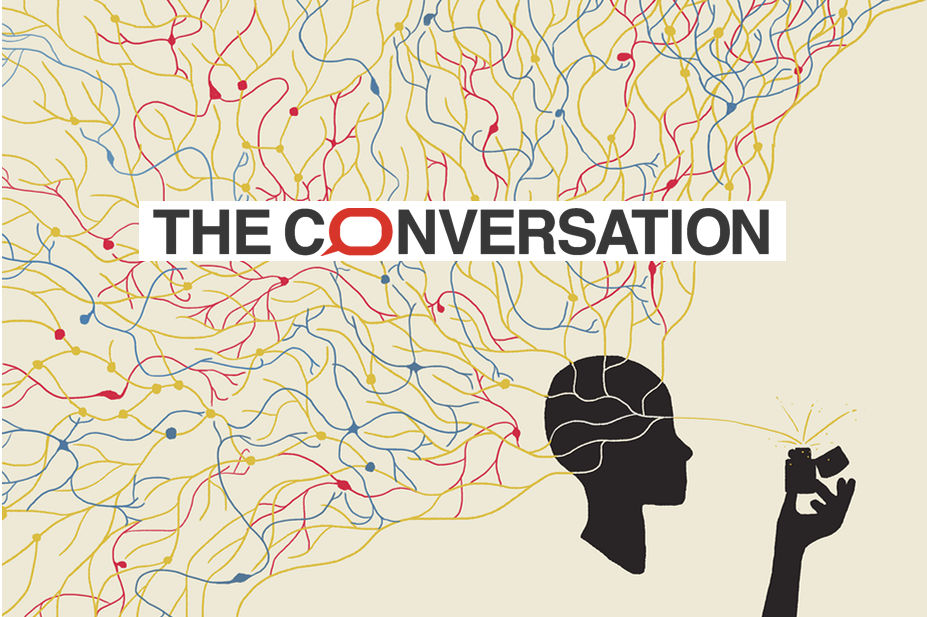Photo: The path from decision to action is a winding one. Diogo Matias,Author provided (No reuse)
Source: The Conversation
Imagine you have just flicked a lighter. If you don’t see the flame, you will naturally try a second time. If after the second attempt it does not strike a flame, you will repeat your action again and again until it does. Eventually, you’ll see the flame and you’ll know that your lighter works. But what if it doesn’t? How long are you going to flick the lighter until you decide to give up?
Our everyday life is full of such decision dilemmas and uncertainty. We constantly have to choose between options, whether we make the most ordinary decisions – should I continue flicking this lighter? – or life-changing choices – should I leave this relationship? We can either keep on doing what we are already used to do, or risk unexplored options that could turn out much more valuable.
Some people are naturally inclined to take more chances, while others prefer to hold on to what they know best. Yet being curious and explorative is fundamental for humans and animals to find out how best to harvest resources such as water, food or money. While looking at the Belém Tower – a symbol of Portugal’s great maritime discoveries – from my office window, I often wonder what drives people to explore the unknown and what goes on in their brains when weighing pros and cons for trying something new. To answer these questions, together with Dr. Zachary Mainen and his team of neuroscientists, we investigate how the brain deals with uncertainty when making decisions.
From decision to action
Although the decisions we make greatly affect our everyday life, how we deliberate and commit is a complex process that we only partially understand. This topic has been largely studied from ethological and theoretical perspectives (Cisek and Kalaska, 2010) and neuroscientists are beginning to uncover several brain areas that contribute to solving dilemmas and act upon them (Gold and Shadlen, 2007). Yet, we are still far from being able to comprehend the sinuous path from decision to action, because even the most mundane decisions involve many brain areas and cooperative interactions between many cells (Montague, 2008).
Take the example of the lighter. To decide whether to continue flicking, you must first gather information: is there a flame or not? This will activate the regions inside your brain that are responsible for processing sensory information such as sight or touch. Then, you may be satisfied if you see the flame, or surprised if you don’t. This is because such sensory information is communicated to your reward system. In turn, the reward circuitry, which releases the molecule dopamine, will help motivate the choice of your next action (Dayan and Niv, 2008).
So, what should you do next? Well, if you see the flame, you can just continue pressing the button to keep it burning. But in the absence of a flame, you may start wondering whether the motion of your finger on the sparkwheel was decisive enough, or whether the lighter ran out of gas. The frontal areas of the brain, which are thought to control cognitive skills such as judgement and problem solving, may help you take into account this uncertainty. If you believe that the lighter still contains gas, you will flick one more time. Once again, this is your frontal cortex that will control the selection of such a voluntary action (Miller, 2000).
Finally, you have to decide how much time you are willing to spend flicking the lighter. This will likely depend on whether you have another one handy. How stubborn you are may be regulated by serotonin, a neuromodulator that has been linked to patience (Fonseca et al., 2015) and persistence (Lottem et al. 2018) even when facing uncertain rewards.
Reconstructing the neural puzzle
At Champalimaud Centre for the Unknown in Lisbon, we have developed a simple task that re-creates the lighter-flicking experience. Here, mice naturally forage for water but drops are delivered sparsely and sometimes, at random, the water resource becomes depleted. This is just like a capricious lighter that produces flames inconsistently, until the reserve of gas suddenly runs low.
In our experiment, we carefully monitor the behaviour of the mice during this task to understand how persistent they are in searching for water, and when they give up to explore somewhere else. Using computational models, we can explain the main aspects of this decision-making process. According to Pietro Vertechi, my colleague who developed the model:
“By translating a difficult decision process (e.g. ‘After how many failures should I give up and change strategy?’) in a naturalistic setting (foraging for food or water), we can study cognition in parallel in mice and humans. Just like in the equivalent naturalistic scenario, the animal receives many different stimuli (from the colour of the box to the smell of the experimenter or the taste of the water), most of which are irrelevant to solving the task. Mathematical modelling tells us what are the important variables that the subject should be tracking (such as the number of consecutive failed attempts). We can then test what brain regions encode that information and how.”
Thus, to reconstruct piece by piece the neural puzzle of decision, we search for these interactive mechanisms in the mouse brain. To scrutinize the activity of different areas of the nervous system and uncover their role as decision-maker, we use state-of-the-art technologies. For instance, a recent technique called fibre photometry, allows us to detect very small signals in the reward system, such as dopamine release, while mice sample the water rewards.
Likewise, to listen at the conversation between neurons in multiple frontal areas, we use a novel technology that records the electrical activity of hundreds of neurons simultaneously while animals perform the task. Because this approach offers a fine spatiotemporal resolution, it has the potential to help us track how information travels within the brain while the decision is formed. Finally, genetically encoded optical switches, which are light-sensitive proteins called opsins, are used to remote-control neural activity using light flashes. This powerful tool allows us to directly control selected groups of cells, such as the neurons that release serotonin, and probe their effects on the behaviour. This could tell us why some animals hesitate while other jump to action.
Beyond the laboratory
A better view on the neural mechanisms that govern our choices could reveal what causes a person to persist in doing something regardless of the risk. Such propensity can lead to cognitive dysfunctions linked to addiction and other compulsive disorders. Thus, understanding the neural processes that control behavioural adaptations could have immense implications for society.
On the other hand, lack of persistence in the face of adversity is one of the trademarks of depressive disorders. Interestingly, although serotonin is the main target of antidepressant drugs, its exact function remains enigmatic. By testing the mechanistic role of this molecule on the modulation of decisions and voluntary actions, we hope to uncover a new fundamental role for this molecule that could potentially lead to innovative therapeutic strategies.
Although our work is far from a complete picture, it is paving the way, one stone at a time, to unravel one of neuroscience’s greatest mystery. The scientific answers that we are gaining about self-initiated actions and decisions may also contribute to philosophical debates such as the question of “free will” (Rigato et al, 2014): Who is the decision-maker? Your brain?
December 2018
Dr. Fanny Cazettes
Discover her project : Preventing and treating addiction by elucidating how the brain deals with uncertainty
PROJECT PAGE



